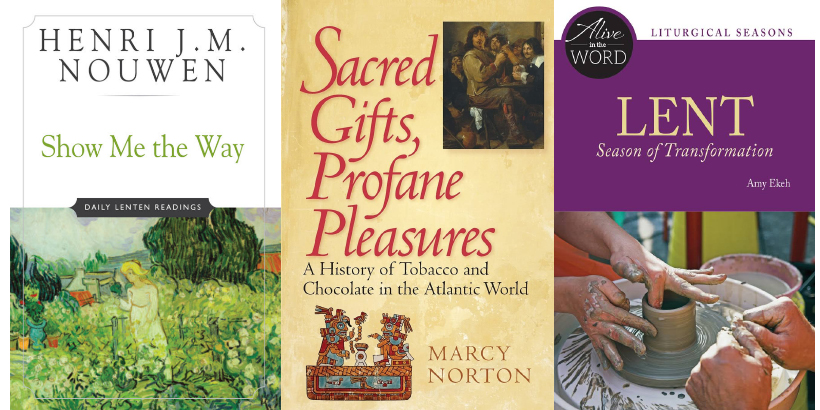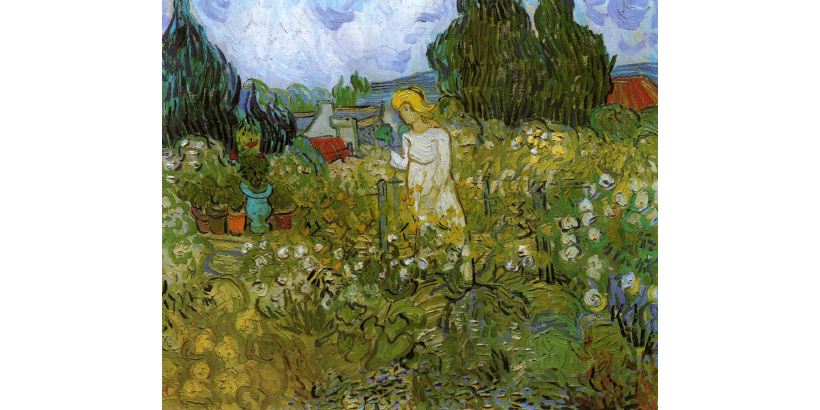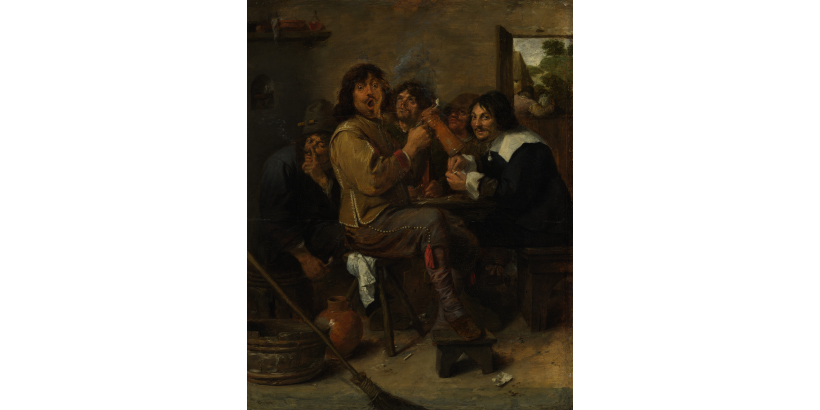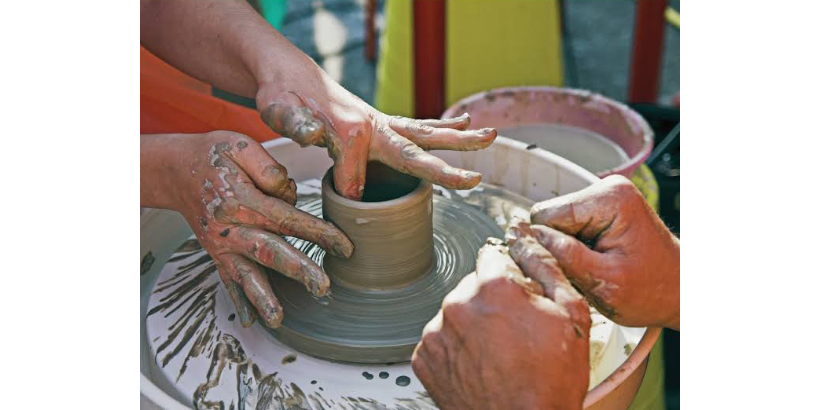Contemplating Transformation This Lenten Season

For the many Christians who celebrate the season of Lent, the 40 days leading up to Easter are marked by prayer, sacrifice, and personal transformation. Guided by scriptures, it’s a time for reflecting on God’s purpose for us as we contemplate the life and the Passion of Jesus Christ. In this blog post, I offer thoughts on how images found on the covers of three books relevant to the Lenten season exemplify ideas conveyed within their pages.
Lent is a time for contemplation and prayer. Henri Nouwen was a Dutch Catholic priest, professor, writer, and theologian who taught at the University of Notre Dame, Yale Divinity School, and Harvard Divinity School. In the stacks of Payson Library, you can find his book Show Me the Way: Daily Lenten Readings (New York: Crossroad, 1992). Nouwen invites readers to join him as fellow pilgrims with short passages from the Bible, reflections on the Scriptures, and prayer. Each daily reading is only a couple of pages, so his book is not a huge time commitment.

In learning about Nouwen, one of the things I found fascinating was that he drew inspiration from Vincent van Gogh. In van Gogh’s painting Mademoiselle Gachet in Her Garden at Auvers-sur-Ois from 1890, the artist shows his subject in what is probably her favorite place for solitude. It’s undoubtedly an ideal location to contemplate the Lord, and to me, it seems appropriate that the Dutch priest chose the work of the Dutch post-impressionist master for his cover art.
Lent is also a time for sacrifice. To become closer to God, it’s common practice for those who celebrate Lent to give up a vice. I know it’s a bit cliche, but I admit I have given up chocolate for several Lenten seasons. And so for my second book selection, I offer up Marcy Norton’s Sacred Gifts, Profane Pleasures: A History of Tobacco and Chocolate in the Atlantic World (Ithaca, NY: Cornell University Press, 2008). Norton is an associate professor of history at the University of Pennsylvania who researches the early modern Atlantic World, focusing on Latin America and Spain. In her book, she discusses how tobacco and chocolate were introduced to Europe from the Americas. Initially dismissed, Norton explains how these two commodities grew in popularity unsurpassed by any other American export, forever changing Europe.

In her chapter titled “Consuming Rituals,” Norton recounts how tobacco and chocolate were enjoyed in “Carnivalesque merrymaking.” She describes Carnival as “celebrations marked by communal spectacle and bodily excess… that took place before Lent” (Norton, 188). This chapter even includes a picture of the same painting found on the book’s cover: Adriaen Brouwer’s The Smokers from circa 1636. I can’t relate to tobacco use since I am a nonsmoker, but I have on several occasions been gluttonous with chocolate in the days leading up to Ash Wednesday. I can certainly connect with the ecstatic figure at the center of the painting (which is also a self-portrait of the artist) enjoying his vice. Sacrificing small worldly pleasures during Lent helps me better understand the temptation Jesus faced during his 40 days and nights of fasting in the Judaean Desert.
And finally, Lent is a time for personal transformation. In Amy Ekeh’s Lent, Season of Transformation (Collegeville, MN: Liturgical Press, 2017), the author explains that we free ourselves from clutter to focus more clearly on God, turning back to him with our whole hearts. She guides readers toward transformation by highlighting three critical moments in Jesus’s life: the calling of the disciples at the Sea of Galilee; the agony in the Garden of Gethsemane; and his farewell address to his disciples at the Last Supper.

Ekeh’s book cover contains a photograph of an artist’s hands at work on a potter’s wheel. While the image is a fairly non-descript stock image, it does present a clear metaphor: that like the clay from which the vessel is formed, and the forthcoming drying and firing that will chemically change the once pliable object into a solid, impermeable state, we too are capable of transformation during Lent.
The three books examined above are just a small sampling of what’s available through the Pepperdine Libraries, and we encourage you to search the catalog for more resources to assist you in your spiritual journey. Whatever you choose to read, may it guide you in your own personal transformation this Lenten season.